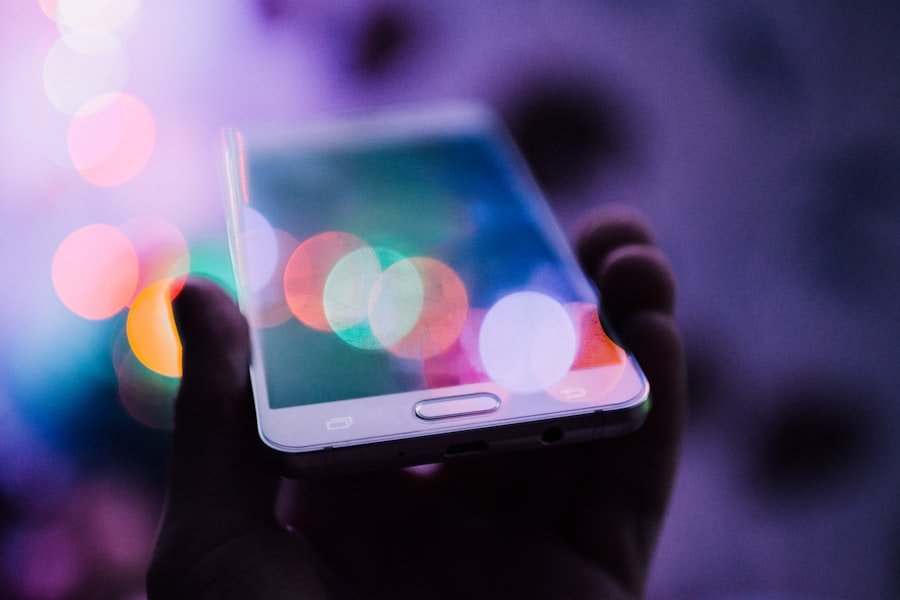This post may contain affiliate links. When you purchase through links on our site, we may earn an affiliate commission.
In an age where technology permeates every aspect of our lives, the concept of mindful tech use has emerged as a crucial framework for navigating our digital environments. Mindful tech use refers to the intentional and conscious engagement with technology, emphasizing awareness of how devices and applications affect our thoughts, emotions, and behaviors. This approach encourages individuals to reflect on their digital habits, fostering a deeper understanding of the impact that constant connectivity can have on their well-being.
By cultivating mindfulness in our interactions with technology, we can reclaim control over our digital experiences and make choices that align with our values and priorities. The practice of mindful tech use involves recognizing the triggers that lead to compulsive behaviors, such as mindless scrolling through social media or incessantly checking emails. It requires individuals to pause and assess their motivations for using technology at any given moment.
Are we seeking genuine connection, or are we simply filling time? By asking these questions, we can begin to differentiate between productive and unproductive tech use. This self-awareness is the first step toward creating a more balanced relationship with technology, one that enhances rather than detracts from our quality of life.
Key Takeaways
- Mindful tech use involves being aware of how and why we use technology, and making intentional choices to use it in a way that aligns with our values and goals.
- Digital minimalism can lead to reduced stress, improved focus, and increased productivity by decluttering our digital lives and prioritizing meaningful activities over mindless scrolling.
- Practical tips for mindful tech use include setting specific time limits for screen time, turning off notifications, and creating tech-free zones in the home.
- Creating boundaries with technology involves setting clear guidelines for when and how we use devices, such as implementing a no-phone policy during meals or before bedtime.
- Digital minimalism can have a positive impact on mental health by reducing feelings of overwhelm, anxiety, and comparison that often result from excessive digital consumption.
The Benefits of Digital Minimalism
Reducing Cognitive Overload
In a world inundated with information, the constant barrage of notifications, emails, and social media updates can lead to mental fatigue and decreased productivity. Digital minimalism encourages individuals to streamline their digital lives by eliminating unnecessary distractions, allowing for greater focus and clarity in both personal and professional pursuits.
Fostering Deeper Connections
Digital minimalism fosters deeper connections with others. When individuals prioritize meaningful interactions over superficial engagements, they often find that their relationships become more fulfilling. For instance, rather than engaging in a quick text exchange or a brief comment on a social media post, individuals practicing digital minimalism may choose to have face-to-face conversations or meaningful phone calls.
Enhancing Emotional Well-being
This shift not only enhances the quality of relationships but also contributes to a sense of belonging and community, which is essential for emotional well-being. By adopting digital minimalism, individuals can cultivate more authentic and meaningful connections, leading to a greater sense of fulfillment and happiness.
Practical Tips for Mindful Tech Use

Implementing mindful tech use in daily life requires practical strategies that can be easily integrated into existing routines. One effective approach is to establish designated tech-free zones or times throughout the day. For example, setting aside specific hours in the evening where devices are put away can create space for more meaningful activities such as reading, exercising, or spending quality time with family.
This practice not only reduces screen time but also encourages individuals to engage in activities that promote relaxation and connection. Another practical tip is to curate digital content intentionally. This involves being selective about the apps, websites, and social media platforms one engages with.
By unfollowing accounts that do not add value or joy to one’s life and subscribing only to content that aligns with personal interests and goals, individuals can create a more enriching digital environment. Additionally, utilizing tools such as website blockers or app limiters can help manage time spent on distracting platforms, allowing for more focused and purposeful tech use.
Creating Boundaries with Technology
| Metrics | Data |
|---|---|
| Number of devices used | 50 |
| Time spent on devices per day | 4 hours |
| Number of social media accounts | 3 |
| Number of hours of screen time per week | 28 hours |
Establishing boundaries with technology is essential for maintaining a healthy relationship with digital devices. These boundaries can take various forms, from setting specific times for checking emails to limiting social media usage to certain hours of the day. For instance, many people find it beneficial to implement a “no devices” rule during meals or family gatherings.
This practice not only fosters deeper connections with those present but also encourages mindfulness around food and conversation. Furthermore, it is crucial to communicate these boundaries with others, especially in professional settings. Colleagues and clients should be made aware of one’s availability and preferred communication methods.
For example, setting clear expectations about response times for emails or messages can help reduce the pressure to be constantly available. By creating these boundaries, individuals can cultivate a sense of autonomy over their time and attention, ultimately leading to increased satisfaction in both personal and professional realms.
The Impact of Digital Minimalism on Mental Health
The relationship between digital minimalism and mental health is increasingly recognized in contemporary discussions about well-being. Research has shown that excessive screen time and constant connectivity can contribute to feelings of anxiety, depression, and loneliness. By adopting a minimalist approach to technology use, individuals can mitigate these negative effects and promote better mental health outcomes.
For instance, studies have indicated that reducing social media usage can lead to improved mood and overall life satisfaction. Moreover, digital minimalism encourages individuals to engage in activities that promote mental well-being outside of the digital realm. By prioritizing hobbies such as reading, exercising, or spending time in nature, individuals can cultivate a more balanced lifestyle that supports emotional resilience.
This shift away from screens allows for greater self-reflection and personal growth, as individuals reconnect with their interests and passions without the distractions of technology.
Mindful Tech Use in the Workplace

In the workplace, mindful tech use is becoming increasingly important as remote work and digital collaboration tools become the norm. Employees often find themselves inundated with emails, instant messages, and virtual meetings, leading to feelings of overwhelm and burnout. By implementing mindful tech practices in professional settings, organizations can foster a healthier work environment that prioritizes employee well-being.
One effective strategy is to encourage regular breaks from screens throughout the workday. Research suggests that taking short breaks can enhance productivity and creativity while reducing stress levels. Employers can promote this by implementing policies that encourage employees to step away from their desks for brief periods or engage in mindfulness exercises during the workday.
Additionally, organizations can provide training on effective communication practices that minimize unnecessary digital interactions, allowing employees to focus on their core tasks without constant interruptions.
Strategies for Digital Detox
Engaging in a digital detox can be an effective way to reset one’s relationship with technology and regain control over digital habits. A digital detox typically involves taking a break from screens for a specified period, ranging from a few hours to several days or even weeks. One popular strategy is to designate specific days as “tech-free days,” where individuals refrain from using devices altogether.
This practice allows for a complete immersion in offline activities and encourages individuals to explore new hobbies or reconnect with nature. Another approach is to gradually reduce screen time by implementing “digital curfews.” For example, individuals might choose to limit their device usage after a certain hour each evening or designate specific times during the day for checking emails or social media. This gradual reduction helps ease the transition into a more mindful tech use routine while still allowing for necessary connectivity during designated times.
Cultivating Mindfulness in a Digital World
Cultivating mindfulness in a digital world requires ongoing effort and commitment but can lead to profound changes in how individuals interact with technology. One effective method is to incorporate mindfulness practices into daily routines. This could involve starting each day with a few minutes of meditation or deep breathing exercises before engaging with devices.
By grounding oneself in the present moment before diving into the digital realm, individuals can approach technology with greater awareness and intention. Additionally, integrating mindfulness into tech use itself can be transformative. For instance, when using social media or browsing the internet, individuals can practice being fully present by paying attention to their thoughts and feelings as they engage with content.
This awareness allows for more conscious choices about what to consume and how much time to spend online. By fostering this level of mindfulness in everyday interactions with technology, individuals can create a more harmonious balance between their digital lives and overall well-being.
If you are looking to create a more mindful and minimalist living space to complement your tech habits, you may want to check out this article on transforming your space with interior design tips. By incorporating elements of simplicity and intentionality into your home decor, you can create a peaceful environment that supports your efforts to use technology more mindfully.
FAQs
What is mindful tech use?
Mindful tech use refers to the practice of using technology in a conscious and intentional way, with a focus on being present and aware of the impact of technology on one’s mental and emotional well-being.
What is digital minimalism?
Digital minimalism is a philosophy that advocates for reducing the time and attention spent on digital devices and platforms, in order to focus on more meaningful and intentional activities.
What are the benefits of mindful tech use and digital minimalism?
Benefits of mindful tech use and digital minimalism include reduced stress and anxiety, improved focus and productivity, better sleep quality, and enhanced real-life social connections.
How can one practice mindful tech use and digital minimalism?
Practicing mindful tech use and digital minimalism involves setting boundaries for technology use, such as limiting screen time, being selective about the apps and platforms used, and prioritizing offline activities and relationships.
What are some tips for incorporating mindful tech use and digital minimalism into daily life?
Tips for incorporating mindful tech use and digital minimalism into daily life include scheduling tech-free time, decluttering digital devices and apps, setting specific goals for technology use, and being mindful of the impact of technology on mental well-being.

 using WordPress and
using WordPress and 
No responses yet